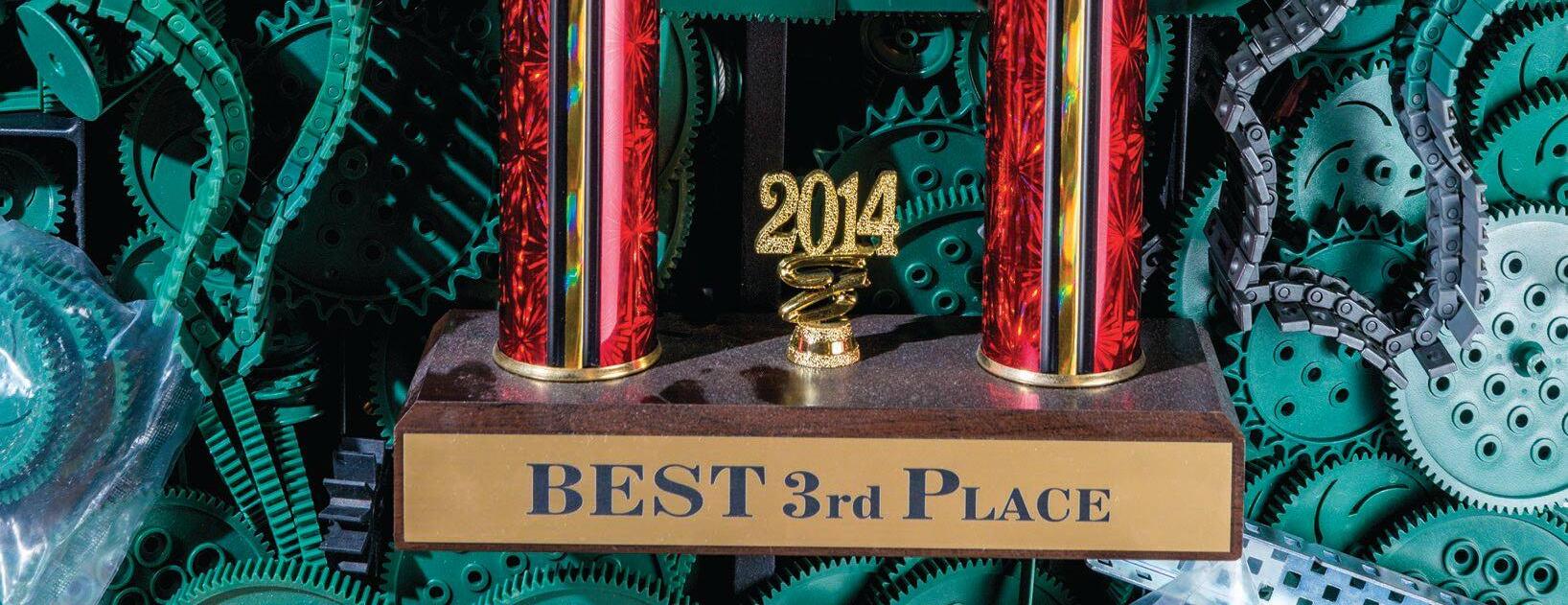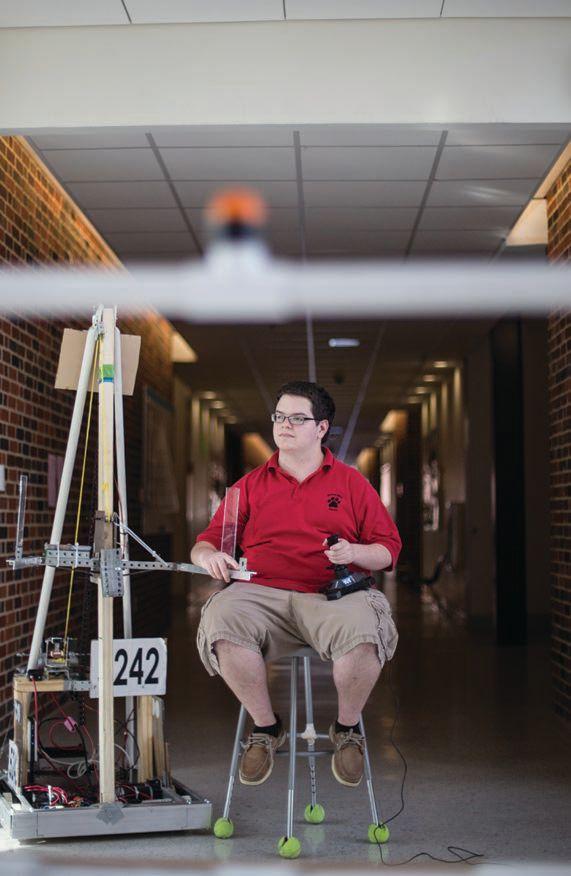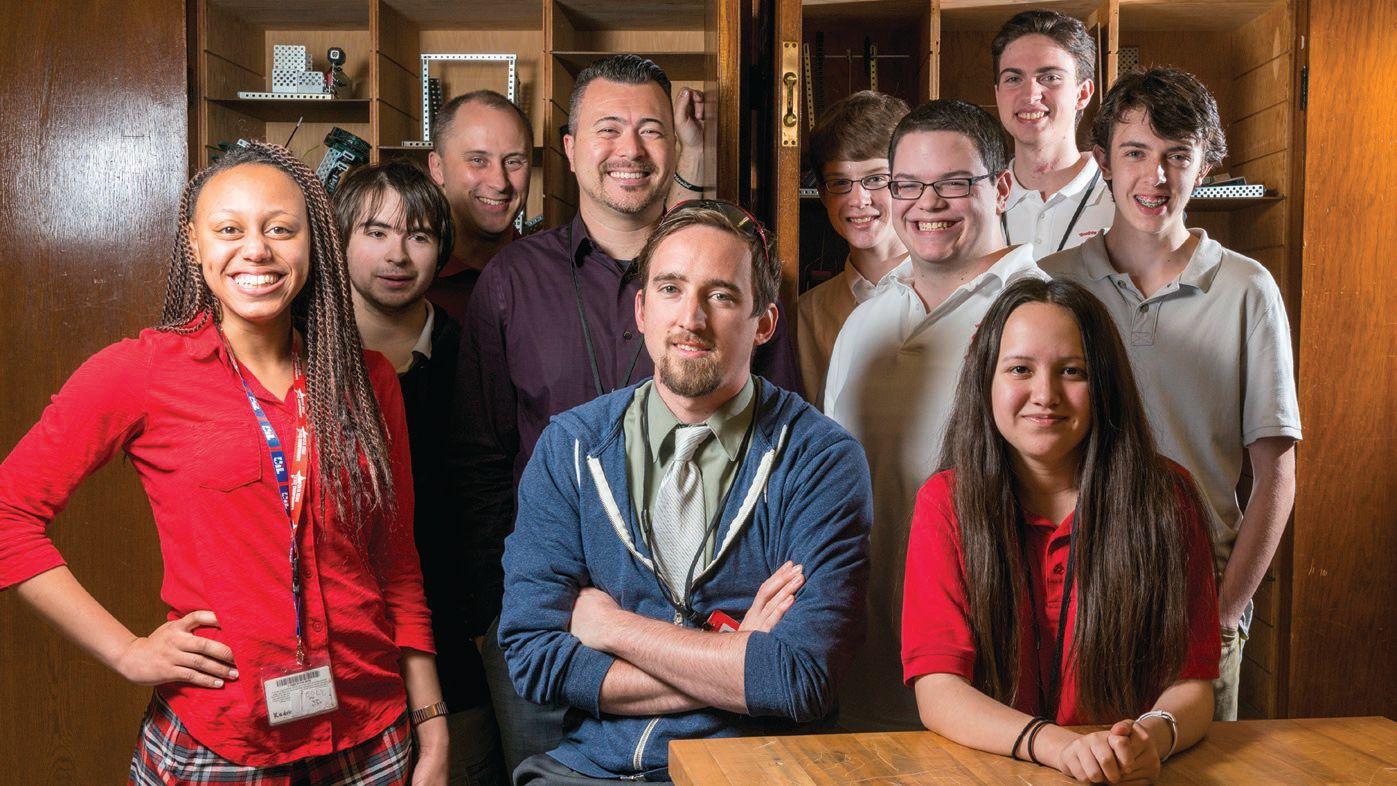
2 minute read
BRAGGING RIGHTS
Three exceptional East Dallas teachers give their students a place to shine


Technically savvy
About a dozen Woodrow Wilson High School students congregate around a table in a classroom where the Science Technology Engineering and Math (STEM) students usually hang out, although not all the students are STEM students.
A couple of them duck into a closet and emerge with a robot on wheels that’s at least six-feet-tall. They call the bot “Tote Stallion.” (Its name is based on a joke from a video game, one of the students points out. “I would explain it, but it would take too long,” he says.)
Tote Stallion is the product of Woodrow’s robotics team, otherwise known as the Robocats. Woodrow teacher Brandon Carver formed the team in 2012 shortly after he joined Woodrow’s staff as the head of the engineering department; however, Carver says Woodrow student Joey Hines, who graduated from the STEM academy this year, is the person responsible for the success of the program. Hines was the one who kept it going the first year when the other students gave up after realizing how difficult and time-consuming robotics really is.
Eventually it caught on, and now every year the Robocats build two robots out of metal, cardboard, PVC pipe, wire, circuit boards and other material or gadgets. The robots are constructed for state and national competitions to achieve a certain task, such as stacking totes or tossing a large ball through a hoop. The students have to create a robot that can perform the task as efficiently as possible. Then they compete against other schools — with intensity.
In their very first competition, the Woodrow team placed sixth, which isn’t bad considering most of their robots are primarily made of PVC pipe and cardboard while other schools have fancy metalwork, and they later placed third place in BEST.
In three short years, Robocats has become a lifeline for some Woodrow students who otherwise wouldn’t have an avenue to show off their unique talents and skillsets.

“They identify as the robotics team,” Carver explains. “And from a teacher perspective, I’ve seen certain students develop identity through the team. The students come here and build robots together, and it’s usually a group that wouldn’t find an identity anywhere else. At least this exists. If this didn’t exist, what would you do?”
“Probably just go home after school like I did freshman year and not like going to school,” Hines replies.
“You didn’t like going to school?” Carver asks.
“No,” Hines says. “I wanted to be in engineering, but I went to class my freshman year and people didn’t want to be there. I didn’t really feel like I identified with the school. My sophomore year, Mr. Carver and Mr. [Jeremy] Turner came, and they completely changed the engineering department.”
But students don’t have to be engineering students or technology whizzes to earn the right to hang out with the Robocats. The team welcomes anyone who wants to learn.

“We often don’t have enough people who can do stuff beyond just building the robot,” Hines says. “Maybe you know how to build a website or design a logo or paint? We try to emphasize that anyone can come, regardless of how much they know or don’t know, and hopefully they’ll learn something once they get here.”









